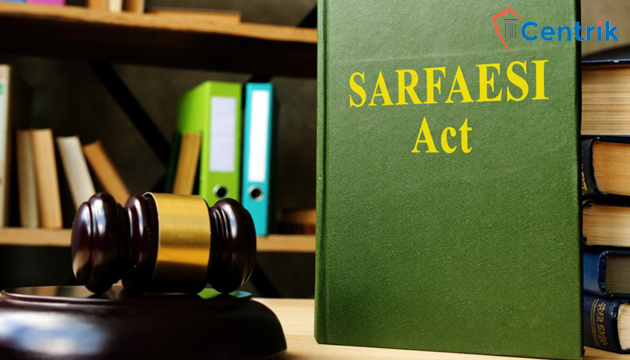
Status as on- 14/12/2021
Need of SARFAESI Act:
Before the SARFAESI Act (‘the Act’), the recovery of loans was a very tedious and slow process which consequently resulted in the mounting levels of Non-Performing Assets. Now, this act provides for the realization of security interest in the favor of the secured creditor without any intervention of the court or tribunal which results in a speedy recovery of Non- Performing Assets.
This Act allows banks and financial institutions to recover their dues exceeding One Lakh Rupees by proceeding against secured assets of the borrower/guarantor without the intervention of the court/tribunals. Moreover, the SARFAESI Act does not differentiate between debtors/borrowers on any basis, including the financial status or debt value.
How proceedings initiated
Under this act secured creditors (banks or financial institutions) have many rights for enforcement of security interest under S. 13 of SARFAESI Act, 2002. If the borrower makes any default in repayment of the loan or payment installments and his account is classified as Non-Performing Asset by a secured creditor, then the secured creditor may require the borrower by notice in writing to discharge in full his liabilities to the secured creditor within sixty days from the date of notice failing which the secured creditor shall be entitled to exercise all or any of the rights under sub-section (4) of Section 13 of the Act.
What is covered under Sarfaesi Act?
The Act coversall the secured debts other than the assets which are not a non-performing asset (NPA), or unsecured loans, loans below ₹ 1,00,000/- or where remaining debt is below 20% of the original principle as stated in Section 31 of the Act.
Less Tedious process:
There is no involvement of the Government in any commercial decisions or recovery proceedings of banks or financial institutions which was the main motive for introducing the Act.
Property valuation also has to be done by the parties. Under Rule 8(5) of the Security Interest (Enforcement) Rules, 2002, it is the duty of the secured creditor to obtain the valuation of the property from an approved valuer and fix the reserve price of the property before putting the property on sale.
Court’s intervention:
Any person, aggrieved by any of the measures taken by the secured creditor (under section 13(4) of the Act) may make an application under section 17 of the Act to the Debts Recovery Tribunal, within forty-five days from the date on which such measures had been taken.
Procedure of Sale and Auction under the SARFAESI Act, 2002:
- A Sale Notice is required in the case of auctioning off of the secured asset if inviting tenders from the public, or by way of public auction. This sale notice shall be published in 2 leading newspapers, on the website of the secured creditor, and as per the Directions of the Ministry of Finance directions, upload the tender notice on tender.gov.in.
- The sale notice or possession notice should be effectively served, i.e. in 2 newspapers in circulation in the area as provided for in the Security Interest (Enforcement) Rules,2002.
- More particularly, the procedure for an auction of immovable assets is given in Rule 8, Security Interest (Enforcement) Rules, 2002. The methods of sale of the immovable secured assets include:
- by obtaining quotations from the persons dealing with similar secured assets or otherwise interested in buying such assets; or
- by inviting tenders from the public;
- by holding public auction; or
- by private treaty. (after the possession of the asset by a Bank or Financial Institution, they might be willing to sell it to an appropriate buyer through a private deal with a third party)
Conclusion:
The SARFAESI Act, 2002, has simplified the recovery procedure of secured loans when they are categorized as Non-Performing Assets by the secured creditor. It has helped in increasing the confidence of the lenders in the credit market and eventually increased the credit flow into the market. All these factors adds-up to increase the Ease-of-doing-business into the Indian markets.
Disclaimer: The above article is based on the personal interpretation of the related orders and laws. The readers are expected to take expert opinion before relying upon the article. For more information, please contact us at rera@centrik.in




 join For Updates
join For Updates